The individual c markings in this diagram do not refer to the "cccccc" bit field in the instruction. They are single bit control lines (the nomenclature could be a little clearer; the C's that go into the ALU are actually the cccccc bits!)
As such, the incoming instruction doesn't just go to that first Mux, it goes all over the place.
Convention: rightmost bit is 0, leftmost bit is 15. So the jjj bits are bit 0, 1, 2, ddd are 3-5, cccccc are 6-11, a is 12, etc.
Consider the leftmost Mux16. It has two inputs, the ALU output and the instruction itself. The control bit it needs it the bit that determines if the instruction is a direct load (ie: the lower 15 bits of the instruction are the data to be loaded into the A register) or not.
This is bit 15. If it is 0, then it's a A instruction, if it's a 1, then it's a C instruction.
What I did in my implementation is define a control line called aInstr like this:
Not(in=instruction[15],out=aInstr);
And then use a Mux16 to generate the proper input for the A register:
Mux16(a=ALUout,b[15]=false,b[0..14]=instruction[0..14],sel=aInstr,out=AREGin);
So if aInstr is false, the Mux16 passes through the output of the ALU, and if it is true, it passes through the instruction with the leftmost bit cleared. And that is what is fed into the A register at the end of the instruction cycle.
You have to do similar things for all the other components.
Note the use of bit fields to generate a 16 bit input with a 0 high bit and 15 bits from the instruction (the "b" input to the Mux). This is a feature of HDL that comes in very handy; you can also use it to split up the output into sub-buses, and they can overlap!
The task of creating the CPU is basically figuring out what the inputs and outputs of each of the functional units are, and what instruction / cpu bits control them. The tricky bits are figuring out what the various outputs should be in special situations (like reset and what do you do with the ALU output when you're not performing an ALU operation)
Don't give up! You'll get a good feeling when it all falls into place!
